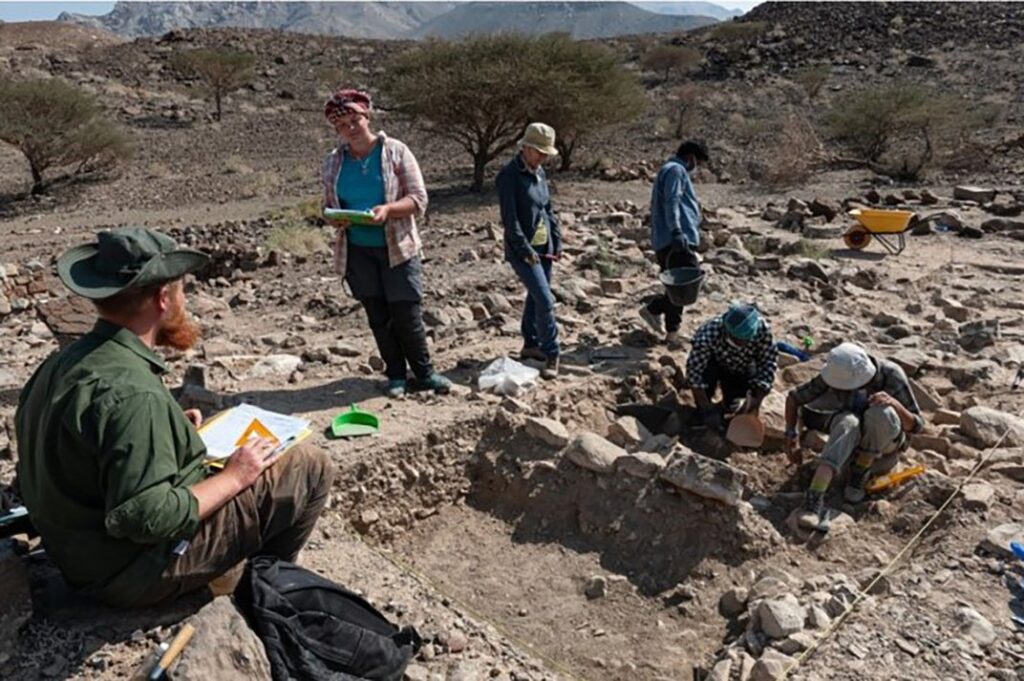An Old Classic Bronze Age board game ‘played 4,000 years ago’ uncovered in the Oman desert
While innovative and artistic board games may hold our attention today, settlers four millennia ago in the Arabian Peninsula whiled away the time on a stone board game.

Last month, archaeologists discovered a stone slab carved with a grid and cup holes to hold game pieces at a prehistoric settlement in the Qumayrah Valley, located in modern-day Oman, reports Samuel Kutty for the Oman Daily Observer.
The team, led by Piotr Bieliński of the Polish Centre of Mediterranean Archaeology and Sultan al-Bakri, Oman’s director-general of antiquities, found the large stone board in a structure near the village of Ayn Bani Saidah.
In a statement, Bieliński said that similar kinds of games have been found in “areas stretching from India, through Mesopotamia even to the eastern Mediterranean.” She cited, as an example, one of the earliest-known game boards found in the ancient Mesopotamian city of Ur’s royal cemetery in 1922, dated around 4,500 years ago. Known today as the Royal Game of Ur, the two-player strategy game was similar to backgammon.

Board games have been played across the world for thousands of years. In Jerusalem, bored Roman soldiers were believed to have carved a grid for a board game on the steps of the Damascus Gate some 1,800 years ago, possibly an early form of modern-day checkers, as reported by Ruth Schuster for the Jerusalem Post in November.
The stone board game in Oman was just one of several discoveries made at the excavation site, reports Ashley Cowie for Ancient Origins.
Archaeologists also unearthed the remains of stone towers—one of which is believed to have been 60 feet tall—and evidence of copper production all dated to the Bronze Age, from 3200 to 1200 B.C.E.
“The settlement is exceptional for including at least four towers: three round ones and an angular one,” says Agnieszka Pieńkowska of the Polish Center, who is analyzing the site’s artefacts and stone structures.
Researchers at Ayn Bani Saidah dated the settlement to the Umm an-Nar period, between 2600 to 2000 B.C.E. They discovered several copper items and smelting remains at the site, indicating the site was involved in the early copper trade, reports the Jerusalem Post.

“This shows that our settlement participated in the lucrative copper trade for which Oman was famous at that time, with mentions of Omani copper present in the cuneiform texts from Mesopotamia,” says Bieliński in the statement.
The team also found evidence that the region remained an important trade and production site through the second phase of the Iron Age, dating from 1100 to 600 B.C.E.
Per the Oman Observer, the Qumayrah Valley has yielded many archaeological finds, likely due to serving as a major trade route between several Arab cities.
“This abundance of settlement traces proves that this valley was an important spot in Oman’s prehistory,” Bieliński tells Ian Randall of the Daily Mail. “Ayn Bani Sadah is strategically located at a junction of [trade] routes.”
The team plans to continue its excavations this year, focusing on areas surrounding the settlement and other parts of the Qumayrah Valley.





